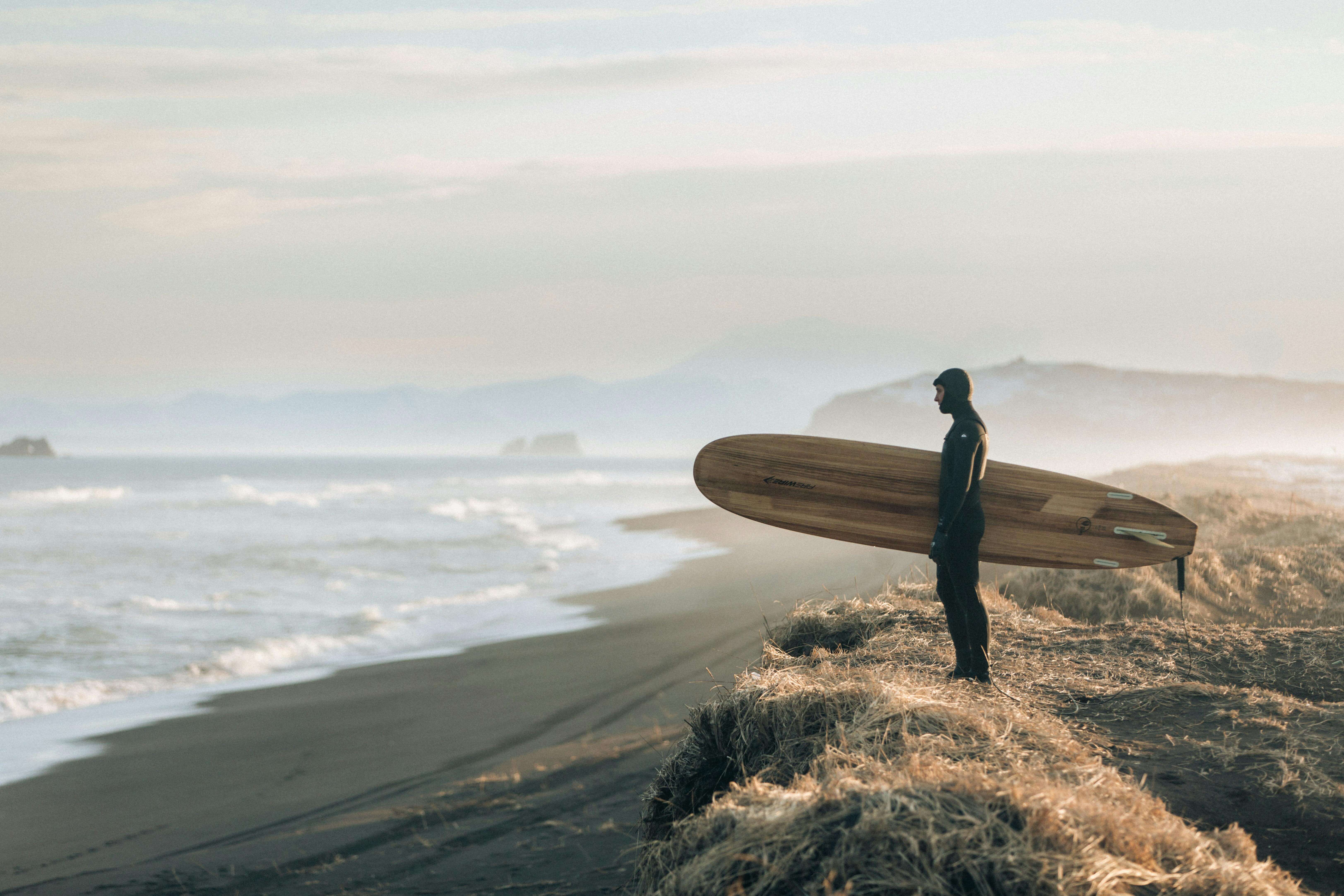
The ocean doesn't come with a rulebook, but surfing certainly does. These aren't regulations posted on beach signs or enforced by lifeguards—they're the sacred, unwritten codes that every surfer learns through experience, observation, and sometimes the hard way. Understanding surf etiquette isn't just about being polite; it's about safety, respect, and preserving the spirit of surfing that has existed for centuries.
Whether you're paddling out for the first time or you've been riding waves for years, these fundamental principles govern how surfers interact with each other and the ocean. They're the difference between harmony in the lineup and chaos, between building friendships and creating enemies, between safe sessions and dangerous situations.
The Sacred Priority System: Who Goes First
The most fundamental rule in surfing revolves around wave priority, and it's surprisingly straightforward once you understand it. The surfer closest to the peak of the wave—where it's breaking or about to break—has the right of way. This person "has priority" and owns that wave until they either catch it, miss it, or decide to let it pass.
This system exists for good reason. When two surfers attempt to ride the same wave from different positions, collisions become likely, equipment gets damaged, and people get hurt. The priority system eliminates confusion and creates order in what could otherwise be a chaotic free-for-all.
But priority isn't just about position—it's also about timing. If you're deeper (further outside) than another surfer but you're not in the optimal position to catch the wave, you don't automatically get priority. The surfer in the best position to successfully ride the wave from its peak takes precedence.
Respect the Lineup: Understanding Your Place
Every surf break has its own rhythm and hierarchy. The lineup—the area where surfers wait for waves—operates on a complex social system that newcomers must learn to navigate respectfully. Local surfers who have been riding a particular break for years naturally command respect, not because they're territorial, but because they understand the break's nuances, dangers, and patterns.
When you arrive at a new spot, take time to observe. Watch how the waves break, where people position themselves, and what the general vibe feels like. Don't paddle straight to the prime spot and start competing for every wave. Instead, position yourself slightly to the side or further out initially, catch a few smaller waves, and gradually work your way into the main lineup as you demonstrate your skill level and respect for others.
This approach is especially important when visiting renowned surf destinations. The surf etiquette rules in Nags Head, NC, for instance, reflect both the area's rich surfing heritage and the need to accommodate both locals and the many visitors who flock to the Outer Banks. Local surfers have spent years learning the intricacies of breaks like the Cape Hatteras area, understanding how different wind conditions, tides, and swells affect each spot.
The Art of Not Dropping In
"Dropping in" represents one of the most serious breaches of surf etiquette. This occurs when a surfer catches a wave that another surfer is already riding, essentially cutting them off and potentially causing a dangerous collision. The surfer who was riding first has the right of way, and interfering with their ride is both disrespectful and hazardous.
Sometimes dropping in happens accidentally, especially in crowded conditions or when waves have multiple peaks. If you realize you've dropped in on someone, the appropriate response is to immediately kick out of the wave (exit the wave by riding over the back) and apologize when you see the other surfer. Most experienced surfers will appreciate the acknowledgment and quick correction.
However, repeated dropping in or doing so without apology marks you as someone who either doesn't understand or doesn't respect basic surf etiquette. This behavior can quickly earn you a negative reputation in any lineup and may lead to confrontations.
Paddling Protocol: The Highway of the Sea
The area between the beach and the lineup functions like a busy highway, with specific rules governing how surfers move through the water. When paddling out, you have the responsibility to stay out of the way of surfers riding waves toward shore. This means paddling around the breaking waves when possible, rather than straight through the impact zone where surfers are trying to ride.
If you find yourself directly in the path of a surfer riding a wave, you have two options: paddle toward the whitewater (the already-broken part of the wave) rather than toward the clean, unbroken face where the surfer is heading, or duck dive/turtle roll to get underneath the wave and out of the way.
Never paddle directly into a surfer's path and expect them to navigate around you. The person riding the wave has limited maneuverability and shouldn't have to compromise their ride because someone else chose poor positioning while paddling out.
Communication and Awareness in the Water
Surfing involves constant communication, much of it nonverbal. Experienced surfers develop an almost telepathic awareness of what others in the lineup are thinking and planning. They make eye contact, use hand signals, and employ subtle body language to communicate intentions.
When you're paddling for a wave and notice another surfer in a similar position, make eye contact if possible. Often, one person will gesture or call out to indicate they're going for the wave, while the other will back off. This prevents awkward situations where both surfers commit to the same wave.
Calling out "left" or "right" when you catch a wave helps other surfers understand which direction you plan to ride, allowing them to position themselves accordingly. Similarly, if you see someone in a potentially dangerous situation—perhaps about to paddle into someone's path—a quick heads-up can prevent accidents.
Local Knowledge and Respect
Every surf break has its own personality, shaped by the local community that surfs there regularly. These locals possess invaluable knowledge about wave patterns, hazards, optimal conditions, and unspoken rules specific to that location. Showing respect for this knowledge and these individuals isn't just polite—it's practical.
Local surfers can provide insights that no website or guidebook can offer. They know which rocks to avoid, when the waves work best, how the tide affects different sections, and what weather patterns produce the best conditions. They've also invested years in maintaining the break's culture and protecting its environment.
When visiting new areas, particularly famous surf destinations, approach with humility. The surf etiquette rules in Nags Head, NC showcase how local customs blend with universal surfing principles. The Outer Banks surfing community has developed specific protocols for dealing with strong currents, rapidly changing weather conditions, and the unique wave characteristics of Atlantic Ocean swells. Visitors who take time to learn these local nuances not only surf more successfully but also contribute to the positive atmosphere that makes these places special.
Environmental Stewardship
Surf etiquette extends beyond interactions between surfers to encompass our relationship with the ocean environment. This includes obvious practices like not littering, properly disposing of broken equipment, and avoiding damage to sensitive coastal ecosystems.
But environmental stewardship goes deeper than basic cleanliness. It involves understanding how human activity affects marine life, respecting protected areas and seasonal restrictions, and supporting conservation efforts. Many surf communities organize beach cleanups, advocate for water quality improvements, and work to protect surf breaks from development or pollution.
Surfers who demonstrate environmental consciousness earn respect in lineups worldwide. This might mean using reef-safe sunscreen, choosing eco-friendly equipment when possible, or simply picking up trash you find on the beach even if you didn't put it there.
Managing Crowds and Peak Conditions
Modern surfing often involves dealing with crowded conditions, especially at popular breaks during optimal surf. Managing these situations requires extra patience, awareness, and adherence to etiquette principles.
In crowded lineups, wave sharing becomes more complex. Priority systems become stricter, and surfers must wait longer between waves. The temptation to become aggressive or territorial increases, but maintaining respect and patience becomes even more important.
Experienced surfers often employ strategies like surfing at off-peak times, exploring less crowded breaks, or positioning themselves in less contested areas of the lineup. They understand that fighting for every wave in a crowd often results in a less enjoyable session for everyone involved.
Learning and Teaching Etiquette
Surf etiquette isn't instinctive—it's learned through observation, instruction, and sometimes mistakes. Experienced surfers have a responsibility to help newcomers understand these unwritten rules, while beginners must approach learning with humility and respect.
The best way to learn surf etiquette is through observation and gradual participation. Spend time watching experienced surfers, notice how they interact, and pay attention to the subtle social dynamics in different lineups. When you make mistakes—and everyone does—acknowledge them, learn from them, and move forward.
Teaching etiquette to others should be done with patience and understanding. Remember that everyone was a beginner once, and the goal is to preserve surfing's positive culture while helping others become better participants in that culture.
Conclusion: Preserving Surfing's Soul
Surf etiquette represents more than just rules—it embodies the soul of surfing culture. These unwritten codes have evolved over decades to create safe, respectful, and enjoyable experiences for everyone who participates in this ancient practice.
Understanding and following surf etiquette doesn't limit your surfing experience; it enhances it. When everyone in a lineup operates according to these principles, sessions become more fun, less stressful, and significantly safer. Waves get shared more equitably, friendships form more easily, and the timeless magic of surfing gets preserved for future generations.
Whether you're surfing powerful breaks in Hawaii, gentle waves in California, or anywhere in between, these principles remain constant. They're your passport to acceptance in surfing communities worldwide and your contribution to maintaining the sport's rich cultural heritage.
The ocean gives us waves freely, but the surfing experience we create together depends entirely on how well we respect each other and these time-tested principles. Master surf etiquette, and you'll find that every session becomes not just about the waves you catch, but about the community you join and the culture you help preserve.




